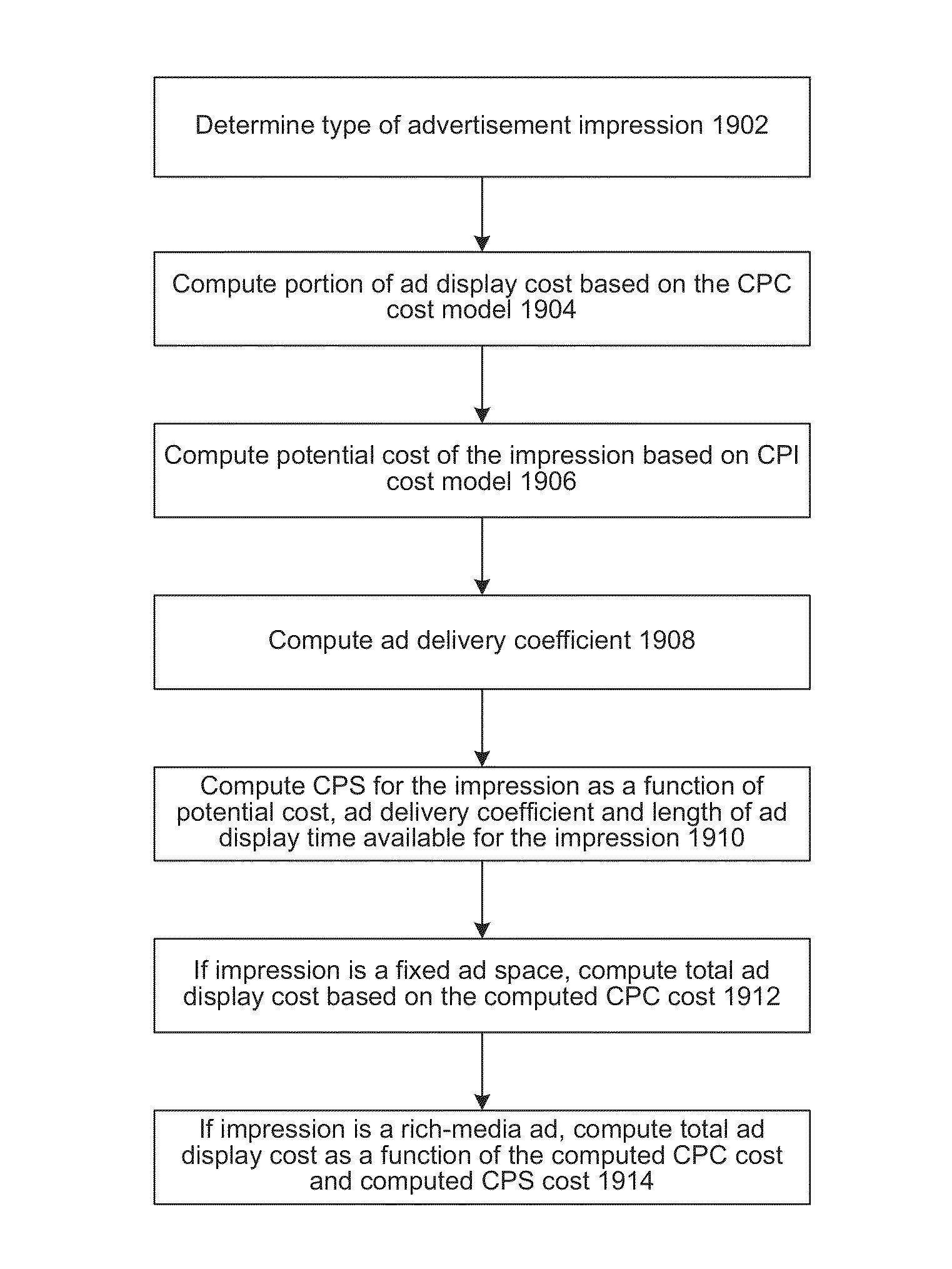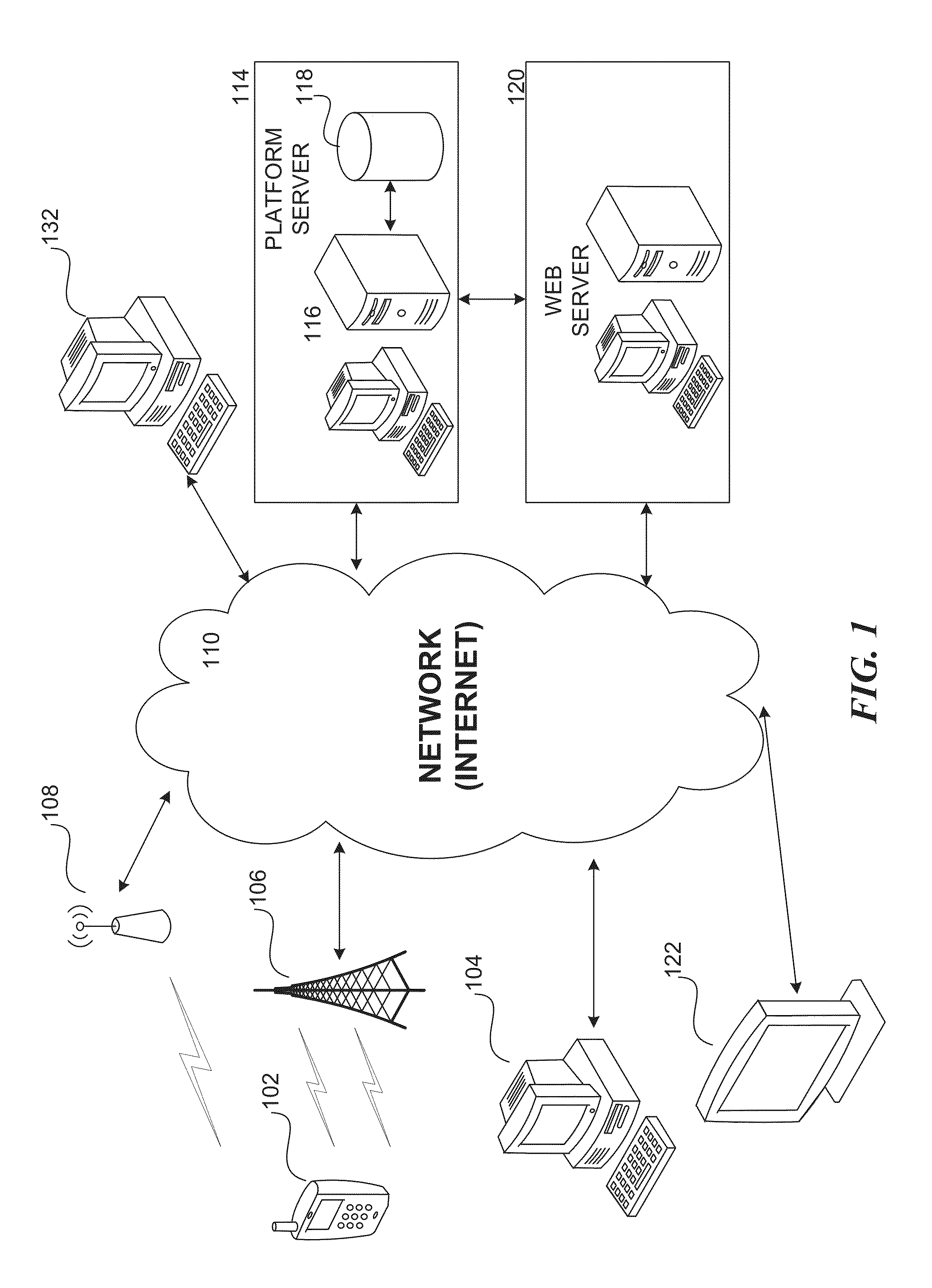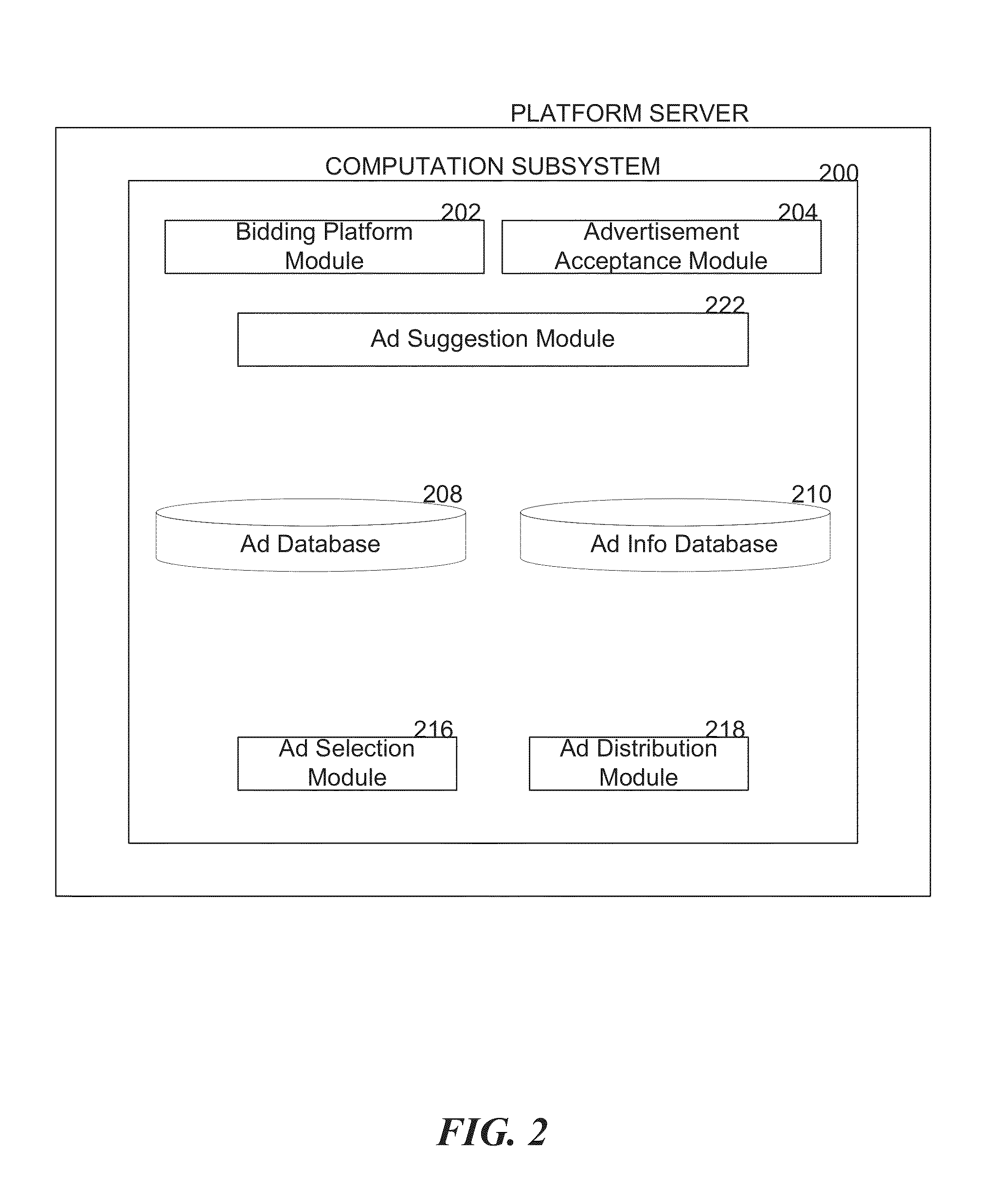Methods and systems for bidding and acquiring advertisement impressions
- Summary
- Abstract
- Description
- Claims
- Application Information
AI Technical Summary
Benefits of technology
Problems solved by technology
Method used
Image
Examples
an embodiment
of GRP
[0305]GRP (gross rating point) is the measure of effectiveness employed mainly for TV advertising and takes into consideration the frequency of the ad being broadcasted and the reach of the delivery. It is defined by the following formula:
GRP=100×rR×f.(39)
[0306]where, R is the total number of latent targets for the ad, r is the realized number of viewers who are targets, and f is the frequency of the delivery. As the ad platform can measure how long each user viewed the ad, the ad platform can include the notion of viewable time into GRP and calculate it for web content c in the following way:
GRP=100×∑u∈Uc(∑v∈Vur(tv))Rc(40)
[0307]where Rc is the number of latent targets for content c, Vu is the set consisting of time of deliveries of content c to user u, tv is the length of engagement (viewable time) when user u is enjoying content c in opportunity v, and r(t) is the (normalized) effect of the content when it is viewed until time t. Here, 0<=r(t)<=1. An example of a system to c...
PUM
 Login to View More
Login to View More Abstract
Description
Claims
Application Information
 Login to View More
Login to View More - R&D
- Intellectual Property
- Life Sciences
- Materials
- Tech Scout
- Unparalleled Data Quality
- Higher Quality Content
- 60% Fewer Hallucinations
Browse by: Latest US Patents, China's latest patents, Technical Efficacy Thesaurus, Application Domain, Technology Topic, Popular Technical Reports.
© 2025 PatSnap. All rights reserved.Legal|Privacy policy|Modern Slavery Act Transparency Statement|Sitemap|About US| Contact US: help@patsnap.com



